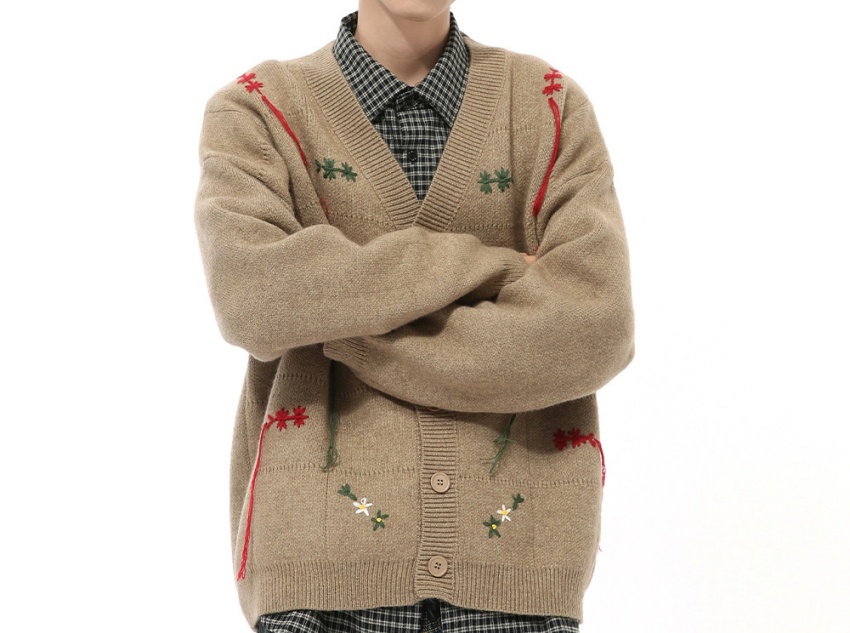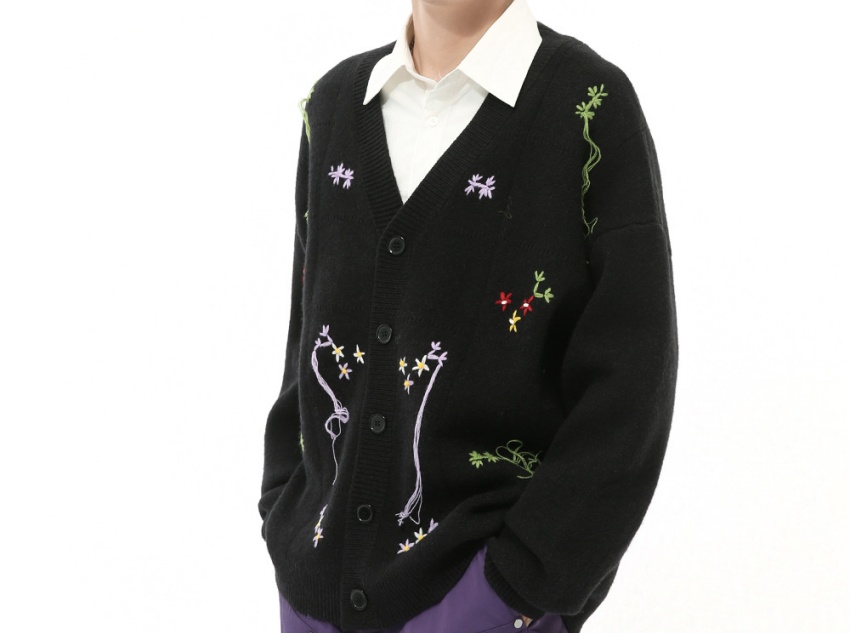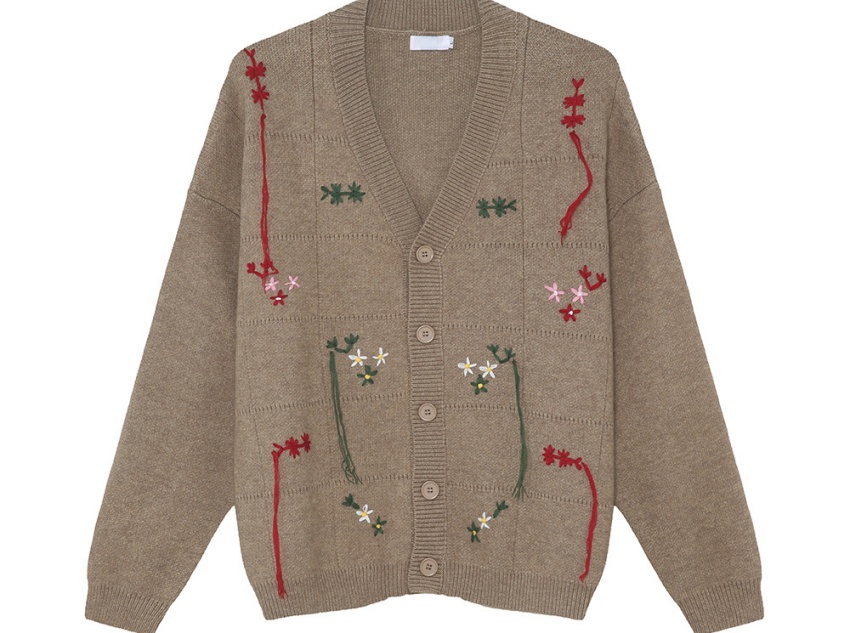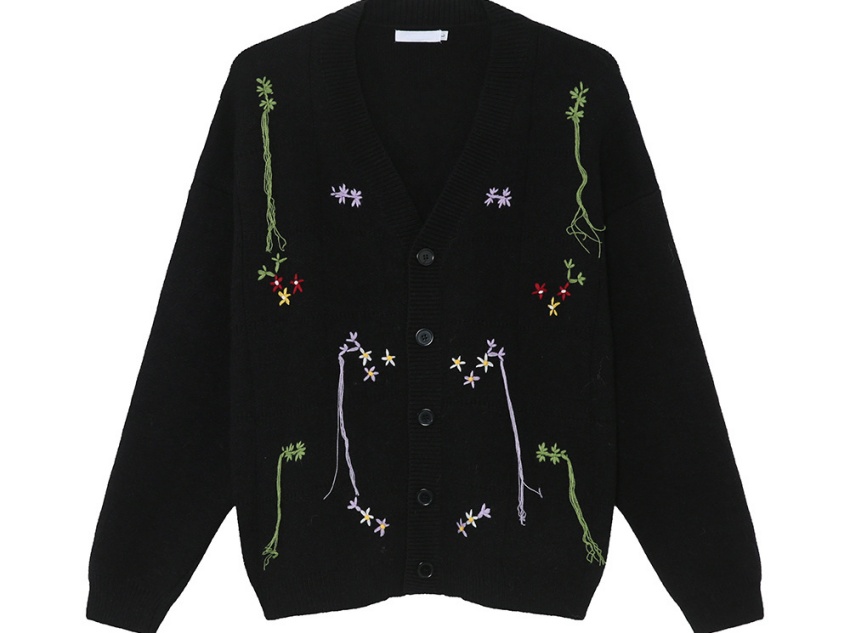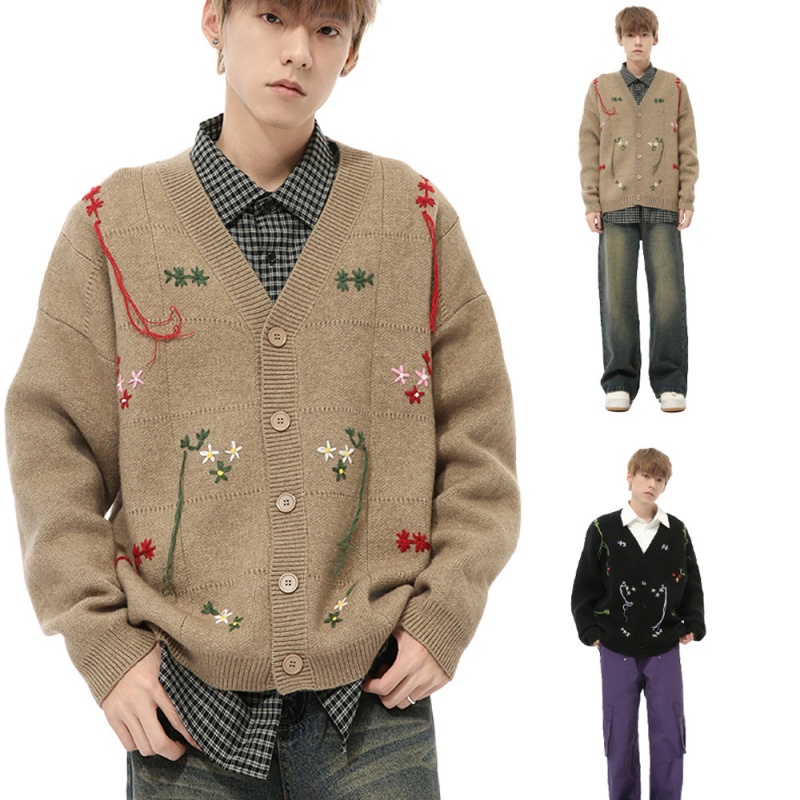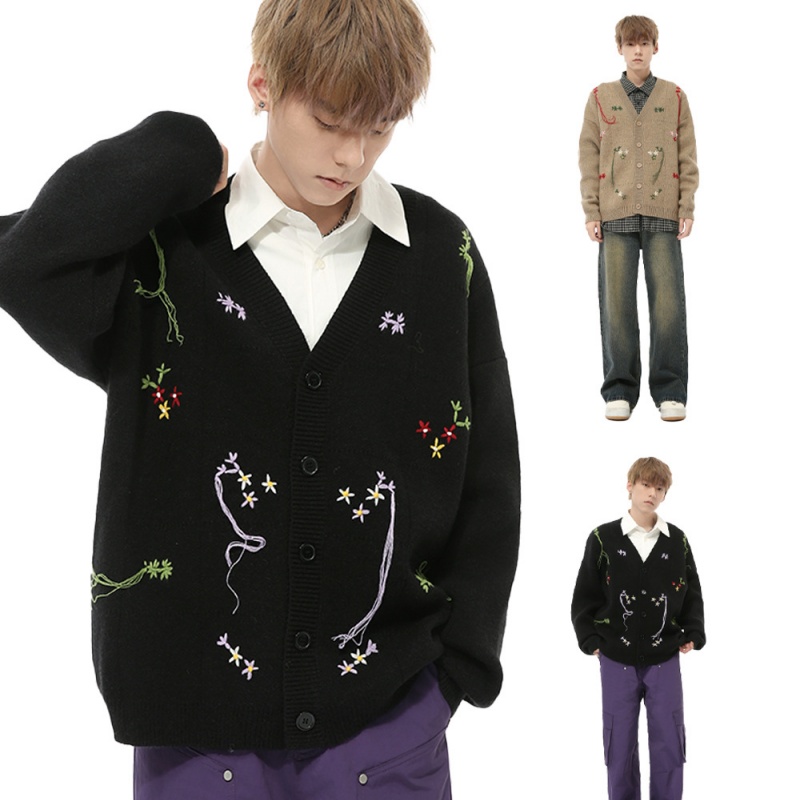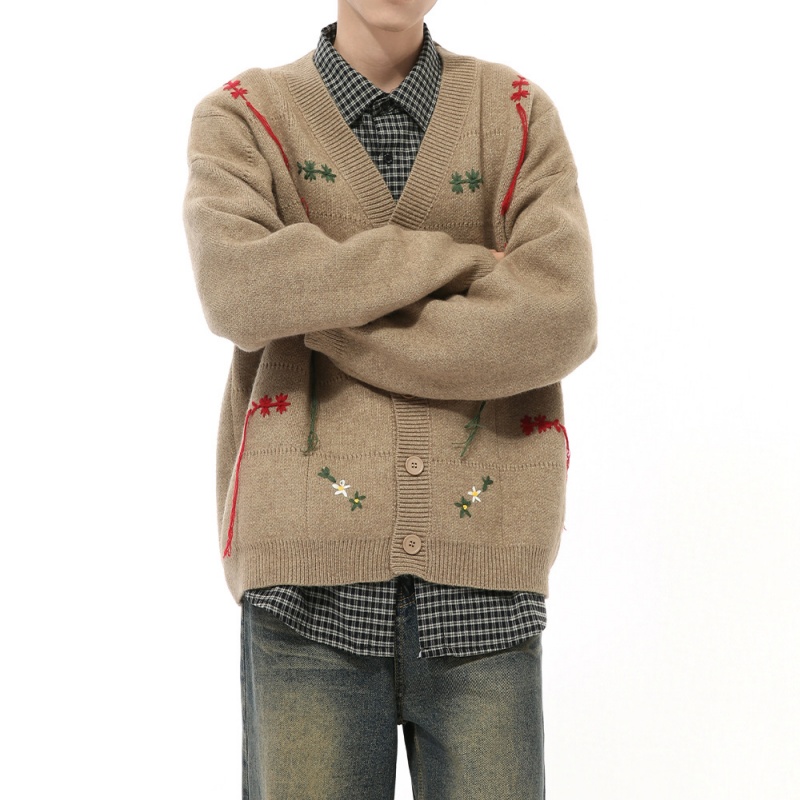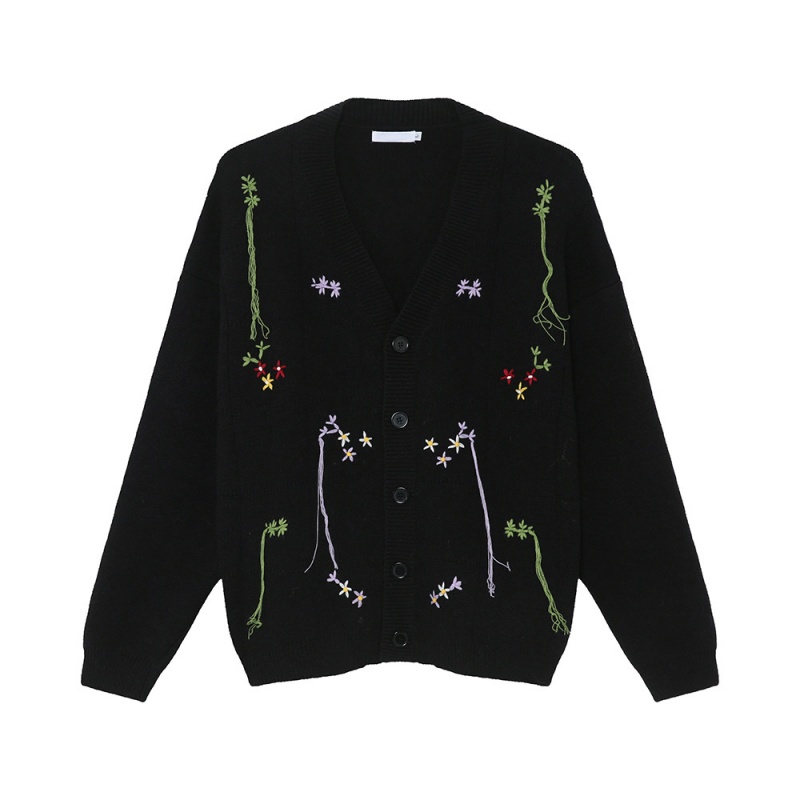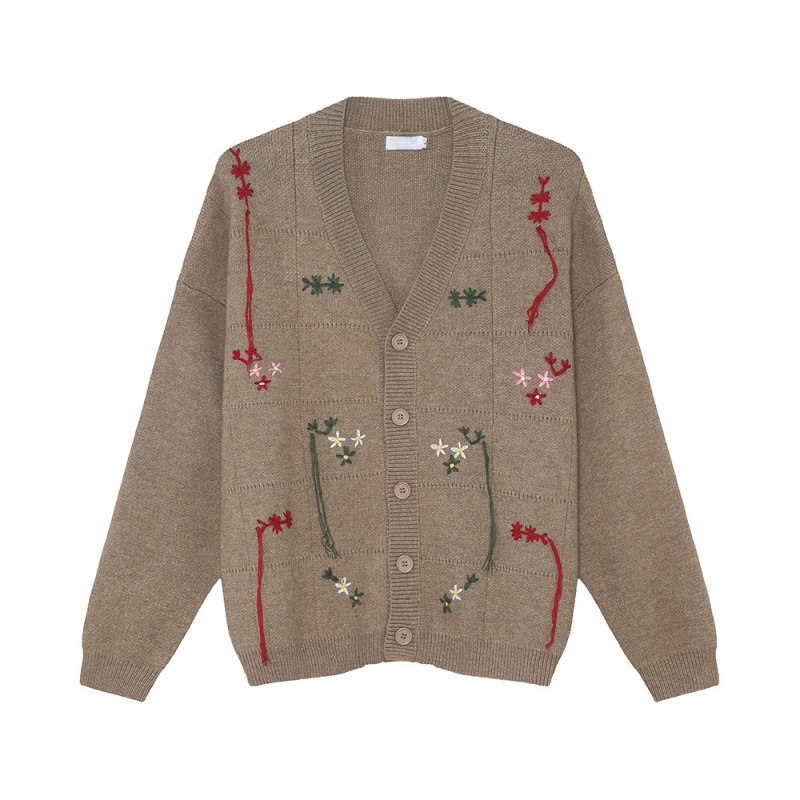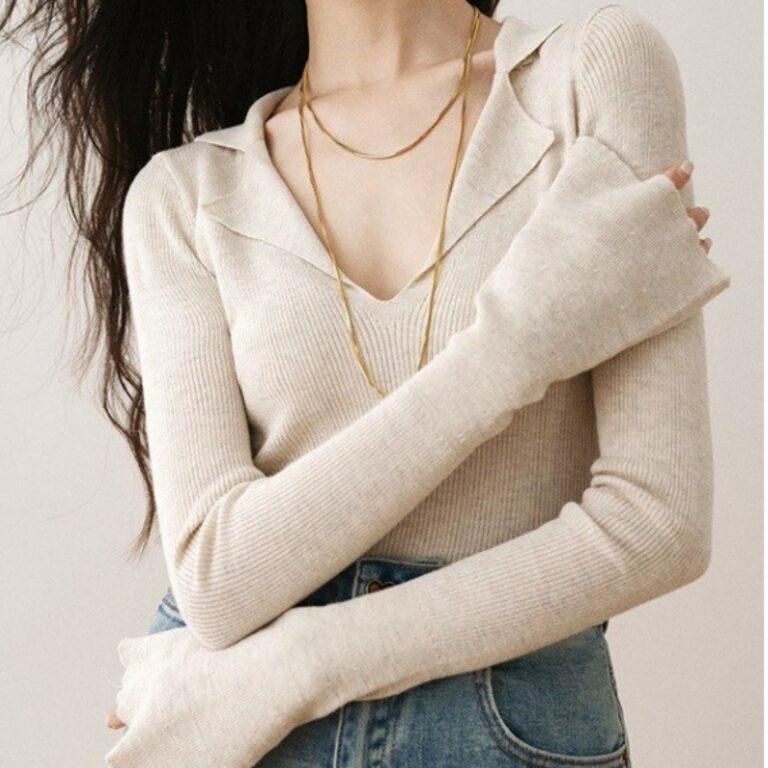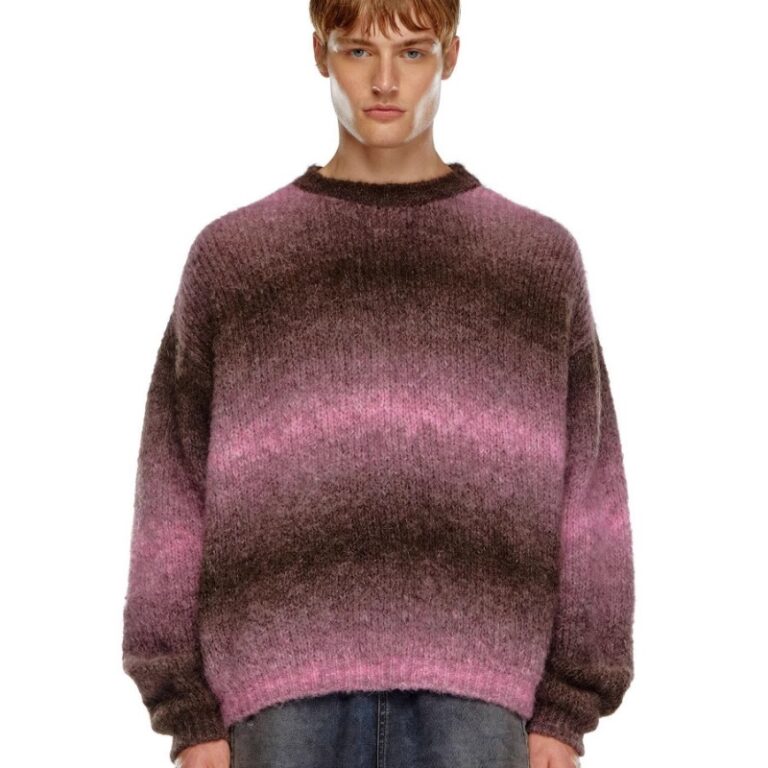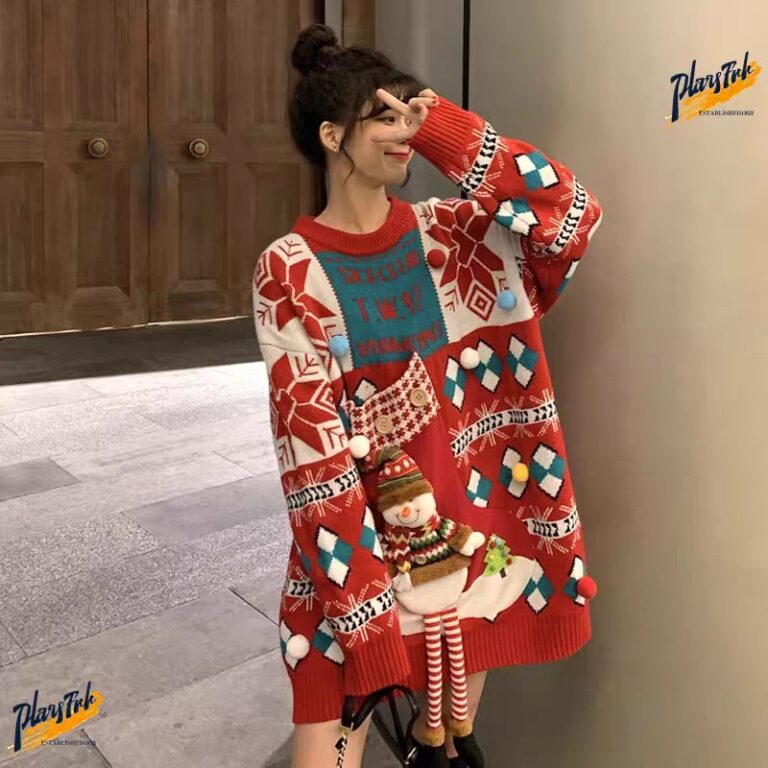This college-style men’s cardigan sweater is based on a V-neck opening, which is a classic college-style extension style. The V-neck design visually lengthens the neck line and is suitable for a variety of inner wear (such as solid color T-shirts and shirts). It not only retains the elegance of the cardigan, but also integrates the “cityboy” style of relaxation due to the loose version.
The overall structure adopts a dropped shoulder sleeve structure, with no obvious seams on the shoulders. The naturally drooping sleeves weaken the hard lines of the shoulders and add a casual temperament; the length of the clothes covers above the hips, with a subtle arc of short front and long back (slightly shorter front and slightly longer back), which is ergonomic and not easy to shrink when walking, taking into account both beauty and practicality.
The sweater is based on plain weave, and the surface presents a delicate and flat texture. This weaving method makes the fabric more stiff and not easy to deform. On this basis, through partial “checkered” weaving, a regular invisible checkered pattern is formed on the body of the clothes-the vertical and horizontal weaving density is fine-tuned to make the visually light checkered texture appear, providing a “canvas”-like foundation for embroidery.
The flowers and branches on the body of the garment are embroidered with a mixed embroidery technique:
Use thick wool thread (the same material as the sweater) to outline the outline of the flower branches with “chain embroidery”, and the thick red and green lines create a strong visual impact, simulating the casual edges of hand-woven knitting.
The small flower pattern is filled with fine cashmere thread with “satin embroidery”, and the flat and smooth embroidery surface contrasts with the thick thread to increase the sense of layering; some small flowers are also embellished with French knot embroidery (such as yellow stamens) to make the pattern more three-dimensional.
This “rough + delicate” embroidery combination breaks the monotony of traditional sweaters and gives the single product a “handmade custom feeling”. The direction of each embroidery thread and the size of the knots are unique, which is a warmth that is difficult to replicate with machine embroidery.
The neckline, cuffs, and hem all use 1×1 ribbed ribs (1 needle up, 1 needle down cycle). This ribbed texture has better elasticity than plain weave and can fit the body curve closely:
The neckline ribs tighten the edge of the V-neck to prevent the neckline from deforming and turning outward. At the same time, due to its elasticity, it can adapt to different neck circumferences;
The cuff ribs fit the wrist, which is both warm and can fix the cuff position, and it is not easy to “move” when matching;
The hem ribs slightly tighten the hem of the body, making the loose version more “contoured” and avoiding excessive looseness.
The density of the main plain weave is slightly loose (creating a sense of relaxation), while the density of the ribs is increased by about 30%, forming a “loose-tight-loose” rhythm: visually, the tightness of the ribs contrasts with the looseness of the main body, strengthening the style level; when worn, the elastic structure of the ribs complements the stretchability of the main body, and the movement is freer.
This cardigan combines retro college style with handmade art. It can be used as the “middle layer” for outdoor layering (with a shirt inside and a windbreaker outside), showing the layering of Japanese workwear; it can also be worn alone with casual pants, using the artistic sense of embroidery to balance the tough bottoms (such as cowboy boots and overalls).
In terms of craftsmanship logic, it jumps out of the framework of “pure functional sweaters” and upgrades sweaters from “basic items” to “style carriers” through the combination of embroidery and knitting – every stitch of embroidery and every groove stripe tells the design philosophy of “retro but not old-fashioned, relaxed and detailed”, allowing men’s wear to find a precise balance between practicality and aesthetics.

